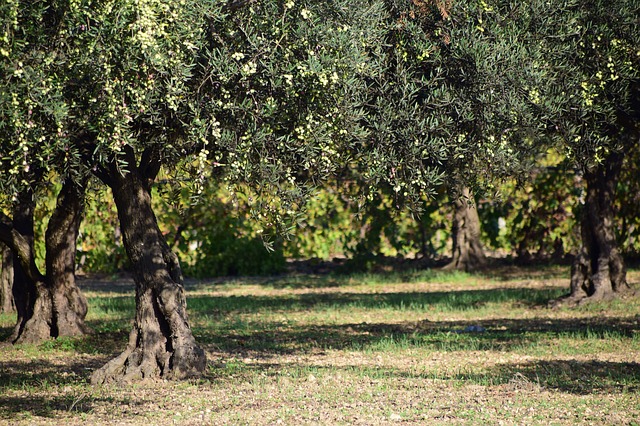Destructive Olive Tree

Question from James:
We have a lovely 71 year old olive tree, in Long Beach, CA planted next to a retaining wall (trunk is 4-5 feet from the wall) that is now causing the wall to lean. The wall needs to be replaced, and cannot be placed farther way from the tree because it is located on the street with a 12 foot setback from the curb. We are in the planning stages of wall replacement and are at the point of either removing the tree (a heartbreak!) or keeping the tree by containing the tree’s roots so that the wall will not be deformed by the tree’s root structure in the future. I have two questions for you. Can a root barrier be used effectively? If so, can you recommend a dependable, experienced landscaper in Southern California, capable of such a task?
Answer from Pat:
First I would like to refer you to the questions and answers on this subject elsewhere on this website. Though your question is slightly different, the information on root barriers, curbs, and olive trees is similar. There is much information given in my answers there which will help you with your problem.
Now for a specific answer to your unique situation: Since the sidewalk is four to five feet from the wall I think a root barrier would work extremely well. Arborists often say roots should not be pruned closer than seven feet from the trunk so the tree does not tip over, but in the case of an olive tree the danger of it tipping over is virtually nil. (Please refer to the detailed instructions I have already given in response to other queries.) I certainly would not remove the tree. Olive trees are extremely resilient. I was on an olive ranch in Italy only three days ago and saw several 500 year old specimens that had withstood all manner of trauma, including roots cut by a road, and they still lived and continued to bear olives.
As far as a contractor to do the work, I do not know of one. One possibility would be to ask your Farm Advisor for a recommendation. Another idea is to ask the advice of a top flight local nursery near you, such as Rogers Gardens in Corona del Mar. At any rate I would consult with a local professional Arborist before root pruning. As I have stated before however, olive trees are more resilient than most other trees.


I live in Santa Clarita CA, 91355. I currently have an Olive Tree in my front yard. Last year it started bearing fruits that stained my concrete and littered my lawn. My gardener also stated that it needs to be removed soon since it will eventually damage my concrete. I am looking for an evergreen tree that will thrive in my zone, not fruit or flower bearing and will not damage surrounding structures.
I appreciate your help.
The first solution I suggest is three-part: First: Dig a two–foot-deep trench next to the pavement you wish to protect and install a two-foot-wide root barrier upright in the trench next to the patio. Then refill the trench and restore the mulch or grass that was there before. Cut off any roots of the olive tree that have already reached that point. Then replace earth and lawn or mulch or whatever is there now. Olive trees are tough and this in unlikely to harm it. A three-foot-deep trench might be even better but is most likely not necessary. Some companies offer this service. However homeowners can do it themselves. (I have a 30-foot-long, stainless steel root barrier buried in the bottom of my garden that was installed by a friend, a wise and helpful horticulturist. For 30 years this barrier has effectively prevented a thick, invasive plumbago hedge from invading my garden. It even goes under a patio.) Find root barriers online.
Secondly: Prune your olive tree in early spring every year to remove new growth prior to flowering. Prune again a week or two later to cut off any remaining flowering wood, or as much as possible. Pruning will actually improve the look of your tree.
Third: When and if you see flower buds begin to develop, spray with a growth regulator to prevent flowering and fruiting. Spray again one week later.
If this seems troublesome, replace with a fruitless olive tree but be sure that you install the root barrier. This is most likely your best option since in general fruitless olives are easy and trouble-free trees. Also you will maintain the look you have now.